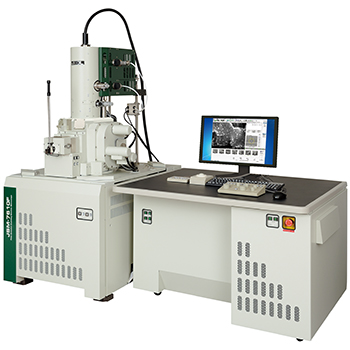Field Emission Scanning Electron Microscope

What can be done with a fesem.
Field emission scanning electron microscope. The specific type of fesem found in the materials physics cleanroom is the leo zeiss 1530 field emission scanning electron microscope with gemini gun and nordliest ebsd. Semi in lens provides high resolution observation and analysis high resolution observation and high spatial resolution analysis is achieved through the combination of a semi in lens type objective lens that can collimate the electron beam even at low accelerating voltages and the in lens schottky electron source that provides a stable current over a long service life. Profit from proven gemini electron optics. Compared with convention scanning electron microscopy sem field emission sem fesem produces clearer less electrostatically distorted images with spatial resolution down to 1 1 2 nanometers three to six.
A scanning electron microscope w uses an electron beam to obtain high levels of magnification and resolution for imaging. Su5000 combines schottky emission electron source and out lens objective lens for high resolution imaging and diverse analyses of samples with various sizes and compositions. You can image particles surfaces and nanostructures. Field emission scanning electron microscope.
Its drawer type stage allows applications with special stages such as heating tensile and so on. Save time with the semi automated 4 step workflow of sigma. Schottky field emission scanning electron microscope su5000. The object is scanned by electrons according to a zig zag pattern.
Field emission microscopy fem was invented by erwin müller in 1936. These electrons are liberated by a field emission source. Particularly the procedures to fix dehydrate and metalize in vitro developed biofilms or ex vivo clinical specimens colonized by biofilm growing microorganisms are described as well as the advantages of the observation of these samples by field emission scanning electron microscopy. A field emission cathode in the electron gun of a scanning electron microscope provides narrower probing beams at low as well as high electron energy resulting in both improved spatial resolution and minimized sample charging and damage.
Structure your imaging and analysis routines and increase productivity. Choose from a variety of detector options. In fem the phenomenon of field electron emission was used to obtain an image on the detector on the basis of the difference in work function of the various crystallographic planes on the surface. Field emission scanning electron microscopy fesem provides topographical and elemental information at magnifications of 10x to 300 000x with virtually unlimited depth of field.
A fesem is microscope that works with electrons particles with a negative charge instead of light.


















